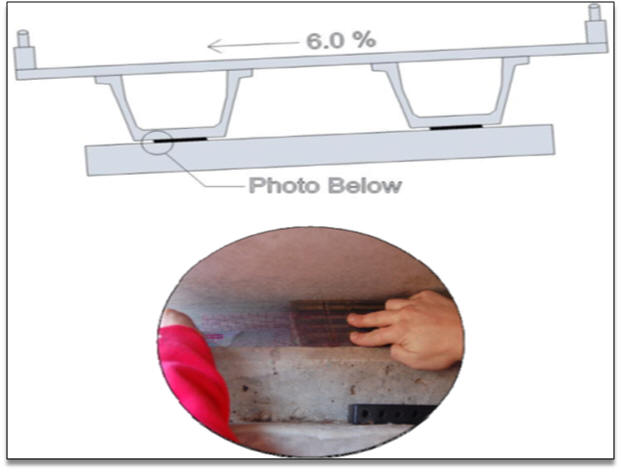Project 0-5834
Study of Elastomeric Bearings for Super-Elevated U-Beam Bridges
Abstract
The primary objective of this research was to determine the best way to consider the effects of transverse superelevation on uniform-height steel-reinforced elastomeric bearing pads for U-Beam bridges. Existing TxDOT design provisions did not specifically account for the effects of the transverse superelevation. A nationwide survey of Departments of Transportation (DOTs) revealed that the country was nearly evenly split on whether or not superstructure elements such as U-Beams should be placed on a transverse superelevation. Specific modifications to the AASHTO Method "A" design of elastomeric bearing equations were developed to account for the transverse superelevation. The proposed modifications were evaluated over typical U-Beam span/spacing combinations for both the U-40 and U-54 sections. The ability of the proposed modifications to predict actual behavior was evaluated by inspecting existing bridges and performing full-scale laboratory testing. Both the field inspections and the laboratory testing validated the need for the proposed revisions. These proposed revisions have been submitted as suggested revisions to the TxDOT LRFD Bridge Design Manual. The feasibility of electronic monitoring in-situ bearings that have experienced significant transverse deflections was investigated. The bulging on the sides of the bearings made monitoring unreliable. Instead, a method to manually record pertinent information during the routine bridge inspection is recommended.

Project PI: Charles D. Newhouse
Project Co-PI's:
W. R. Burkett
Phillip T. Nash
Center for Multidisciplinary Research in Transportation (TechMRT)
-
Address
Texas Tech University, Box 41023, Lubbock, TX 79409-1023 -
Phone
806.742.3523 -
Email
techmrt.outreach@ttu.edu
